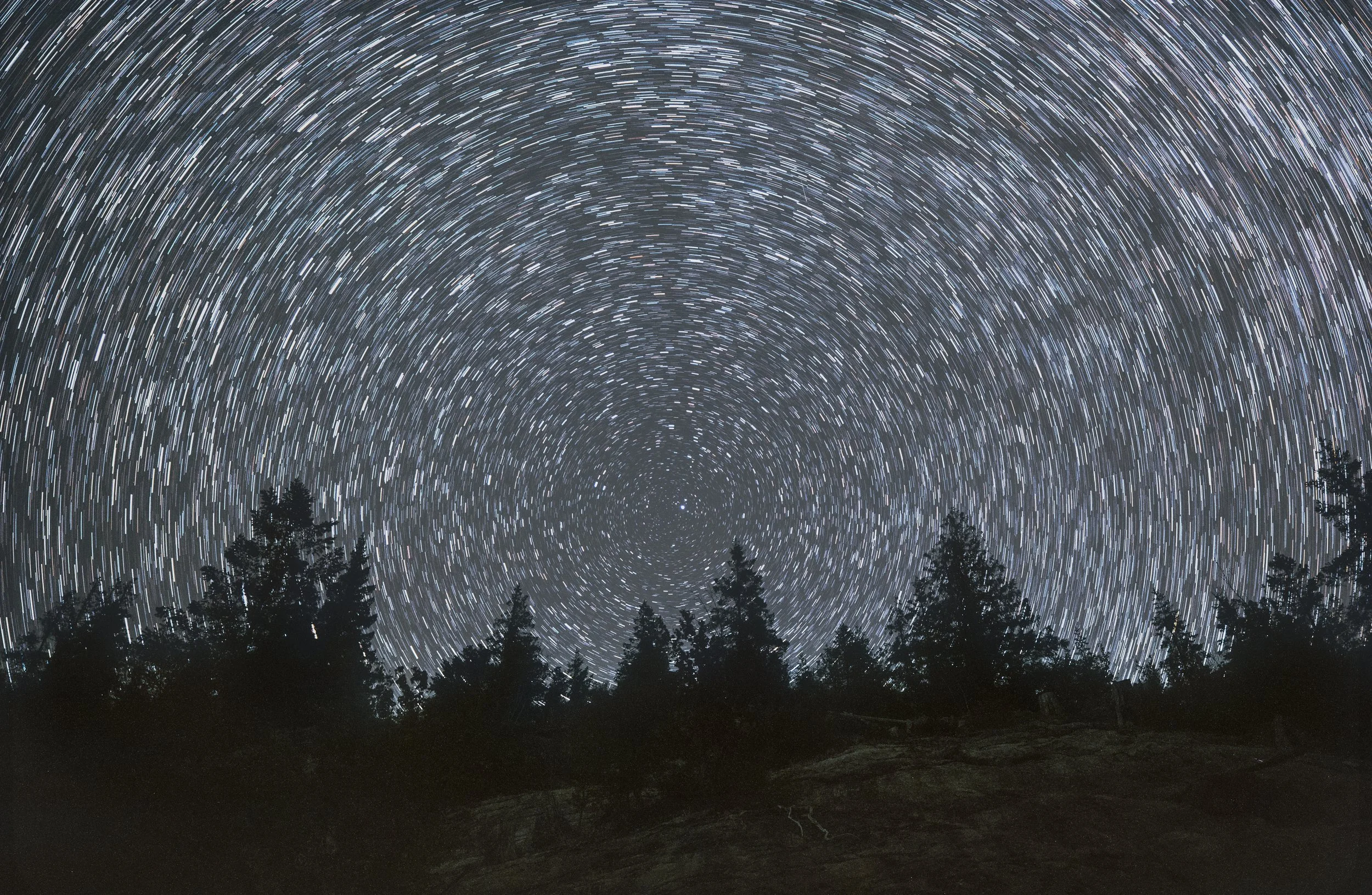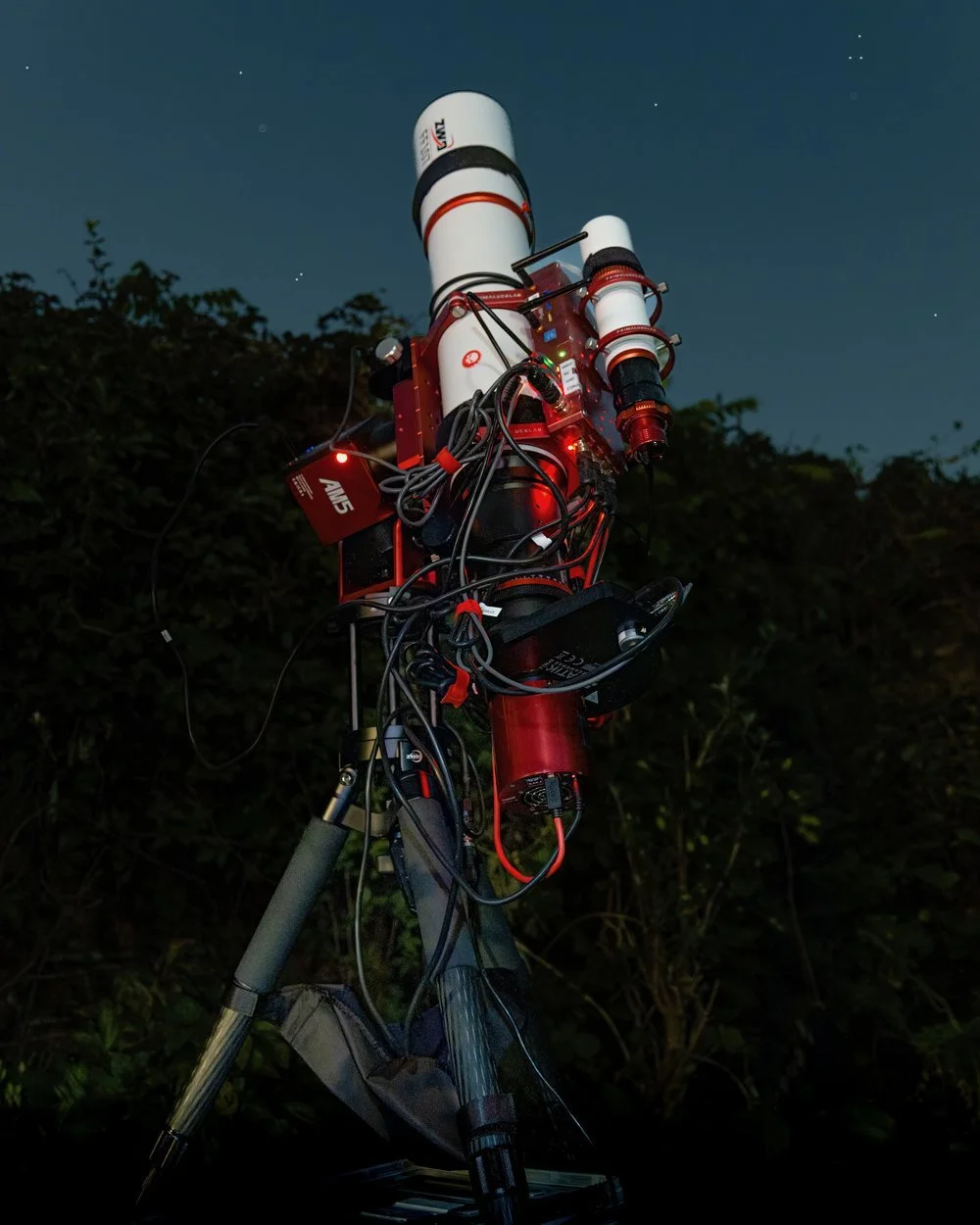
Time-lapse Astrophotography
For my Milky Way time-lapse videos, I have mostly been using this workflow:
Camera settings: As a guide use the ‘500 Rule’ where 500 ÷ focal length = exposure.
Shoot RAW images files with an intervalometer and the camera on ‘Bulb’ setting.
Process a master RAW file and tweak exposure/colour/levels to your liking.
Copy the settings from that master RAW file to the others. Now you have a set of adjusted frames.
Export the files as jpegs, numbered in ascending order from the start.
Compile the RAW files into video via Photoshop at 24 frames per second. If there is flicker, I compile it in software called TLDF (Time-Lapse DeFlicker).
Tweak the final video in Photoshop and add music.
There are better video editing options than Photoshop, such as Premier Pro or Avid. However, Photoshop is a familiar workspace/interface to me and already paid for, so I opted for that instead. It seems fine for short videos but does have its limitations.
Time-lapse following the Milky Way from the start of astronomical darkness to sunrise. This was taken over four nights from the same location on Vancouver Island, Canada at a dark Class 2 site with seeing slightly affected by smoke from forest fires and summer heat. Thank you to my wife who joined me sleeping on reclined seats in the back of the car and then came back for two more nights.
This was edited in Camera Raw, Photoshop and TLDF (Time-lapse Deflicker).
Camera: Canon EOS Ra
Lenses: Canon RF24-105 F4 L IS USM, Canon RF15-35 F2.8 L IS USM
Settings: 15mm ISO 6400 f/2.8 30”;35mm ISO6400 f/2.8 14”; 42mm ISO 12800 f/4 12”
Collaboration with ambient music genius Alexander Hawkins whose music can be found at:
https://soundcloud.com/alexandershawkins
Time-lapse Milky Way
Time Lapse Polaris
This one shows the effects of the Earth’s rotation as the stars circle Polaris. It’s my first attempt at star streaks. This was shot over three and a half hours and the white-out at the end is sunrise. The location was a super-dark site on Canada’s Vancouver Island. To streak the stars I used free StarStax software and referred to this excellent tutorial:
https://www.youtube.com/watch?v=zSjCeg3VxyE&t=6s
Equipment and settings:
Camera: Canon EOS Ra
Lens: Canon RF15-35 F2.8 L IS USM at 35mm
f/2.8, ISO6400
907x12” at 24fps
Bortle Class 2
Collaboration with ambient music genius Alexander Hawkins whose music can be found at:
https://soundcloud.com/alexandershawkins
In this image above the time-lapse has been converted tino a still photograph to show how the rotation of the earth causes the stars to move through my field of view in streaks. They all revolve around the Pole Star - that’s the biggest one in the centre. You can see it’s slightly offset to the top right, so it’s not exactly the centre point, but pretty close. The furthest stars from Polaris move fastest and can rise and set below the horizon in a single night.
In the Northern Hemisphere all targets rotate like this. Taking long exposures, a telescope must track them precisely to account for the rotation so that the stars appear round, not streaky. The AM5 mount is pretty accurate at following the sky. But to gain an extra level of precision the white mini telescope you can see fixed on top takes a frame every half a second and executes the tiniest of nudges to offset any error.
I took this image above on Canada’s Vancouver Island. It’s a composite of 907x12” frames taken over the course of 3 hours. There is a moving version of it in the timelapse section of this website.
Camera: Canon EOS Ra
Lens: Canon RF 15-35mm F2.8 L IS USM
ISO: 6400
Time-lapse Cygnus Region
Time-lapse showing the Milky Way’s Cygnus region moving across the pristine skies above a forest on Vancouver Island, Canada. This is five hours real time condensed to 38 seconds. Various satellites and aircraft can be seen whizzing through frame. As daylight arrives the sky turns blue, then white.
Camera: Canon EOS Ra
Settings: 6400, 15mm, f/2.8/ 30”/24fps
Collaboration with ambient music genius Alexander Hawkins whose music can be found at:
https://soundcloud.com/alexandershawkins
Time Lapse Moon
Aurora Borealis
Music from #Uppbeat (free for Creators!): https://uppbeat.io/t/aaron-paul-low/beholden License code: RDGYVVIOSRAVB5BR
This aurora timelapse was nominated as a ‘Top Pick’ on the Astrobin website. It was shot with a series of three second frames over the course of just over an hour with my Canon EOS Ra camera. The video runs at 24fps.

